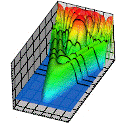Department of Physics and Astronomy: Publications and Other Research

Anthony F. Starace Publications
Document Type
Article
Date of this Version
August 1983
Abstract
We present here a brief overview of the theory of atomic photoionization. The main aim is to describe current theoretical understanding of the dynamics of the photon-atom collision process. In particular the discussion focuses on those kinds of electron correlation that have been found to be most important for photoionization processes. The general theoretical formulation of the interaction between an incident photon and an N-electron atom is presented first. This is followed by a description of those quantitative and qualitative features of the photoionization cross section that can be understood within a central potential model. The particle-hole type of electron correlations are then discussed in detail, as they are by far the most important for describing the single photoionization of closed-shell atoms near ionization thresholds. Among recent developments, we discuss in some detail the hyperspherical coordinate method for obtaining correlated two-electron wavefunctions. Not only has the method provided a novel means for classifying whole series of doubly excited states, but it has also provided a new interpretation of the process of photoionization accompanied by excitation. More detailed presentations of the theory of atomic photoionization have been given by the author elsewhere.


Comments
Published in FUNDAMENTAL PROCESSES IN ENERGETIC ATOMIC COLLISIONS, edited by H. O. Lutz, J. S. Briggs, & H. Kleinpoppin. New York : Published in cooperation with NATO Scientific Affairs Division by Plenum Press, 1983. Used by permission.